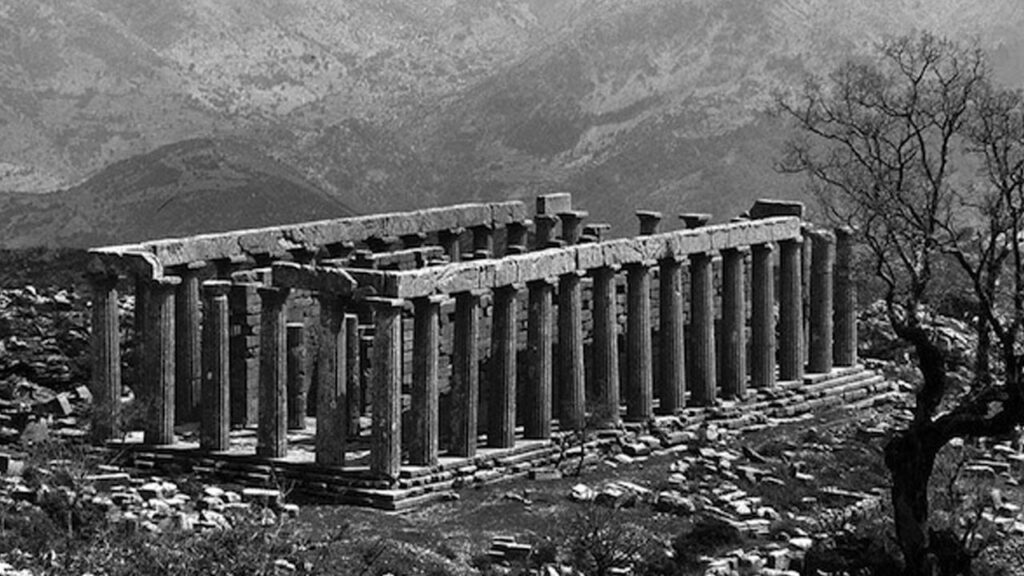The Temple of Apollo stands as one of the most iconic structures of classical antiquity, embodying the grandeur and spirituality of ancient Greek civilization. Revered for its architectural brilliance and profound cultural significance, this sacred monument, dedicated to Apollo—the god of light, music, prophecy, and healing—served not only as a religious sanctuary but also as a center for political and philosophical discourse. Scattered across the Greek world, multiple Temples of Apollo—most notably in Delphi, Didyma, and Bassae—have left behind enduring legacies that continue to fascinate archaeologists, historians, and travelers alike.
This comprehensive article will explore the historical importance, architectural brilliance, spiritual resonance, and ongoing legacy of the Temple of Apollo. We will also examine how this historical treasure ties into the modern appeal of Greek real estate, offering a unique blend of heritage and lifestyle.
Origins and Mythological Context
Apollo in Greek Mythology
Apollo was one of the most important and complex deities in the Greek pantheon. The twin brother of Artemis and the son of Zeus and Leto, Apollo represented a wide range of concepts, including light, rationality, prophecy, music, healing, and archery. His dual nature, combining rational wisdom and artistic inspiration, made him an emblem of balance and harmony.
According to mythology, Apollo slew the Python, a monstrous serpent that guarded the Delphic oracle. After his victory, Apollo established his temple at Delphi, which would become one of the most revered oracular sites in the ancient world. This mythological event laid the foundation for one of the most important sanctuaries in the Hellenic world.
The Temple of Apollo at Delphi
Historical Background
Delphi, located on the slopes of Mount Parnassus, was considered the navel (or omphalos) of the world by the ancient Greeks. The Temple of Apollo was the central structure within the sanctuary, and its influence extended across the Greek world.
The original structure was built in the 7th century BCE but was destroyed by fire in 548 BCE. The temple was rebuilt with contributions from Greek city-states, showcasing pan-Hellenic unity.
Architecture
The temple followed the Doric order, featuring six columns at the façade and fifteen along the sides. The inner sanctum (adyton) housed the Pythia, the high priestess of Apollo, who delivered oracles while in a trance-like state. The temple was adorned with sculptures and inscriptions that communicated divine wisdom and social norms.
The Temple of Apollo at Didyma
A Rival to Delphi
Located in modern-day Turkey, Didyma’s Temple of Apollo was second in importance only to Delphi. This temple was known for its oracle, which attracted pilgrims from across the Mediterranean.
Monumental Design
Construction began in the 4th century BCE and, astonishingly, continued for several centuries without ever being fully completed. The temple featured an enormous dipteral (double row) colonnade of Ionic columns, each standing nearly 20 meters tall. The inner courtyard was hypaethral (open to the sky), allowing sunlight to illuminate the sacred spring believed to have prophetic powers.
The Temple of Apollo Epicurius at Bassae
Remote but Refined
Unlike the bustling sanctuaries of Delphi and Didyma, the Temple of Apollo Epicurius at Bassae was located in a remote part of Arcadia in the Peloponnese. Constructed in the 5th century BCE, it was designed by Ictinus, the same architect who co-designed the Parthenon.
Architectural Fusion
This temple is remarkable for its combination of architectural orders—Doric on the exterior, Ionic within, and a single Corinthian column at the center, considered the earliest example of the style. Its north–south orientation and covered design set it apart from traditional Greek temples. A continuous Ionic frieze depicted epic battles, showcasing an extraordinary level of artistic detail.
Spiritual and Cultural Importance
Center for Prophecy
The Temple of Apollo at Delphi was more than a religious site; it was a political hub. Kings, generals, and common citizens alike sought the advice of the Oracle before making significant decisions. The cryptic messages delivered by the Pythia were interpreted by priests and often shaped the course of wars and treaties.
Festivals and Rituals
Delphi hosted the Pythian Games every four years, featuring athletic, musical, and poetic competitions. These events fostered unity among Greek city-states and celebrated Apollo’s influence in arts and athletics.
Architectural Significance
Doric, Ionic, and Corinthian Excellence
The Temples of Apollo exemplified classical Greek architecture. The use of proportional harmony, geometric precision, and decorative sculpture turned these buildings into masterpieces. Each temple employed the unique qualities of Greek orders—Doric strength, Ionic elegance, and Corinthian intricacy.
Use of Light and Space
Many temples, particularly Didyma’s hypaethral design, utilized natural light to enhance spiritual experience. Apollo, as the god of light, was symbolically and practically honored through architecture that celebrated illumination.
Rediscovery and Excavation
Archaeological Triumphs
Modern interest in the Temples of Apollo began with systematic excavations in the 19th and 20th centuries. The French School at Athens played a major role in uncovering Delphi, while German archaeologists led work at Didyma.
Preservation Efforts
Today, major temples like Bassae are UNESCO World Heritage Sites. Preservation programs ensure that these ancient structures are protected for future generations, with some being reconstructed digitally or with partial physical restoration.
Tourism and Modern Influence
Cultural Tourism
Sites like Delphi and Didyma attract thousands of tourists annually. Visitors marvel not only at the ruins but also at the surrounding natural beauty, often considered an extension of the divine landscape.
Influence on Modern Architecture
Neoclassical buildings, from government halls to museums worldwide, draw inspiration from Apollo’s temples. Their timeless aesthetic continues to shape architectural trends.
Educational Value
Teaching Ancient Wisdom
The Temple of Apollo is often included in educational curricula, illustrating ancient philosophy, religious practices, and architectural innovation. It is a symbol of balance between spiritual and rational life—a lesson as relevant today as it was 2,500 years ago.
Apollo in Art and Literature
A Symbol of Perfection
Apollo appears in countless works of classical and modern art, literature, and philosophy. His temple has been referenced by poets like Pindar, dramatists like Aeschylus, and even philosophers like Plato, who emphasized the Delphic maxim “Know thyself.”
Greece Real Estate: Where History Meets Lifestyle
Greece offers more than just breathtaking views and delicious cuisine—it offers the chance to live amid history. Whether near the ancient ruins of Delphi or the coastal serenity of Didyma, real estate in Greece presents a rare blend of culture, beauty, and investment potential. The country’s architectural heritage has inspired stunning modern villas, restored stone houses, and neoclassical estates that harmonize with their surroundings. With flexible residency options and a growing interest in heritage tourism, owning property in Greece allows individuals to immerse themselves in a landscape that breathes history while enjoying all the comforts of modern Mediterranean living.
Conclusion
The Temples of Apollo are not merely ancient relics—they are enduring legacies that capture the essence of Greek civilization. Through their architectural majesty, spiritual significance, and cultural impact, they continue to inspire awe and reverence. As physical manifestations of divine wisdom and human ingenuity, they remind us of the timeless pursuit of truth, beauty, and harmony. In a world that is constantly evolving, the Temples of Apollo stand still, whispering the wisdom of the ancients to all who will listen.


